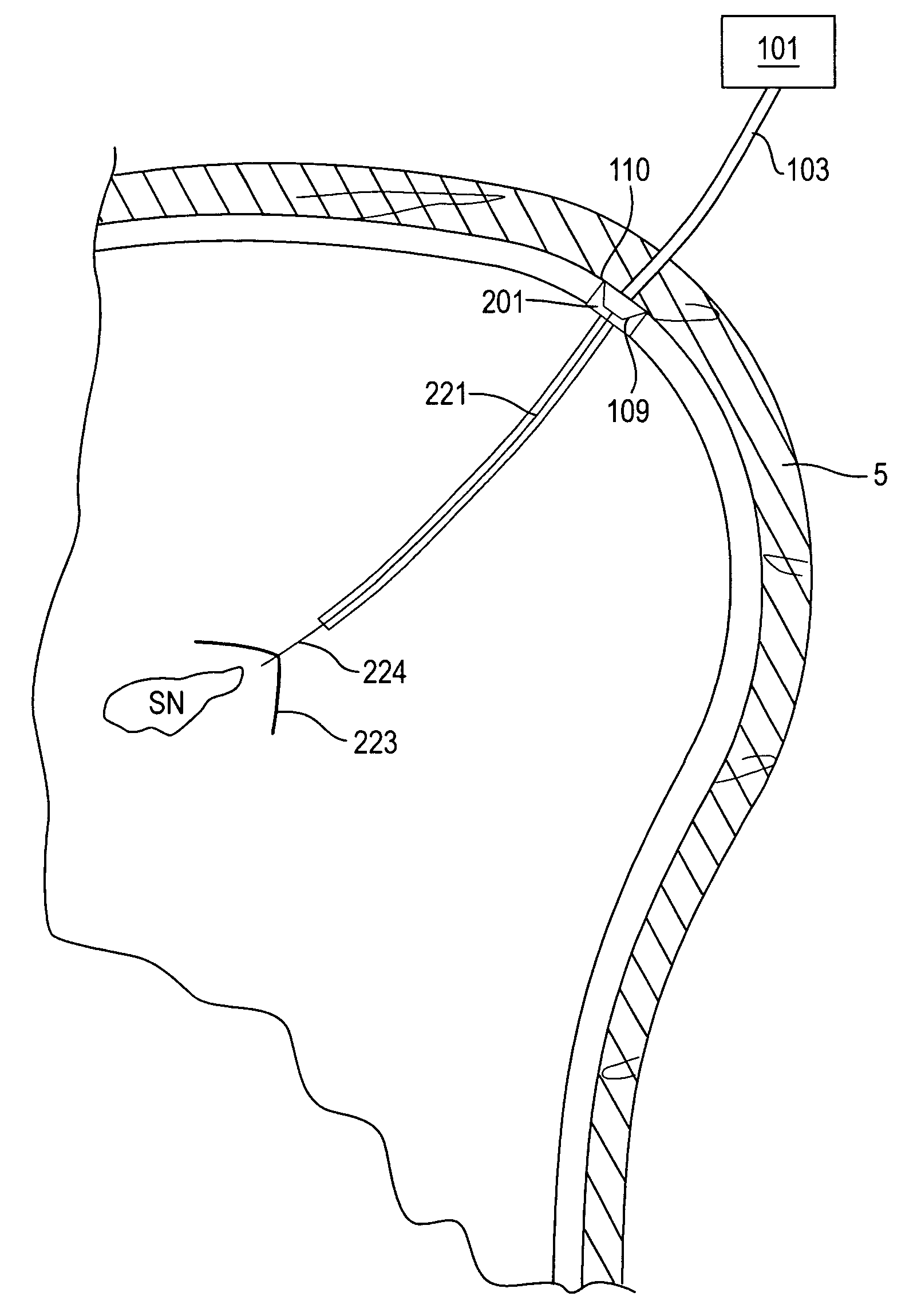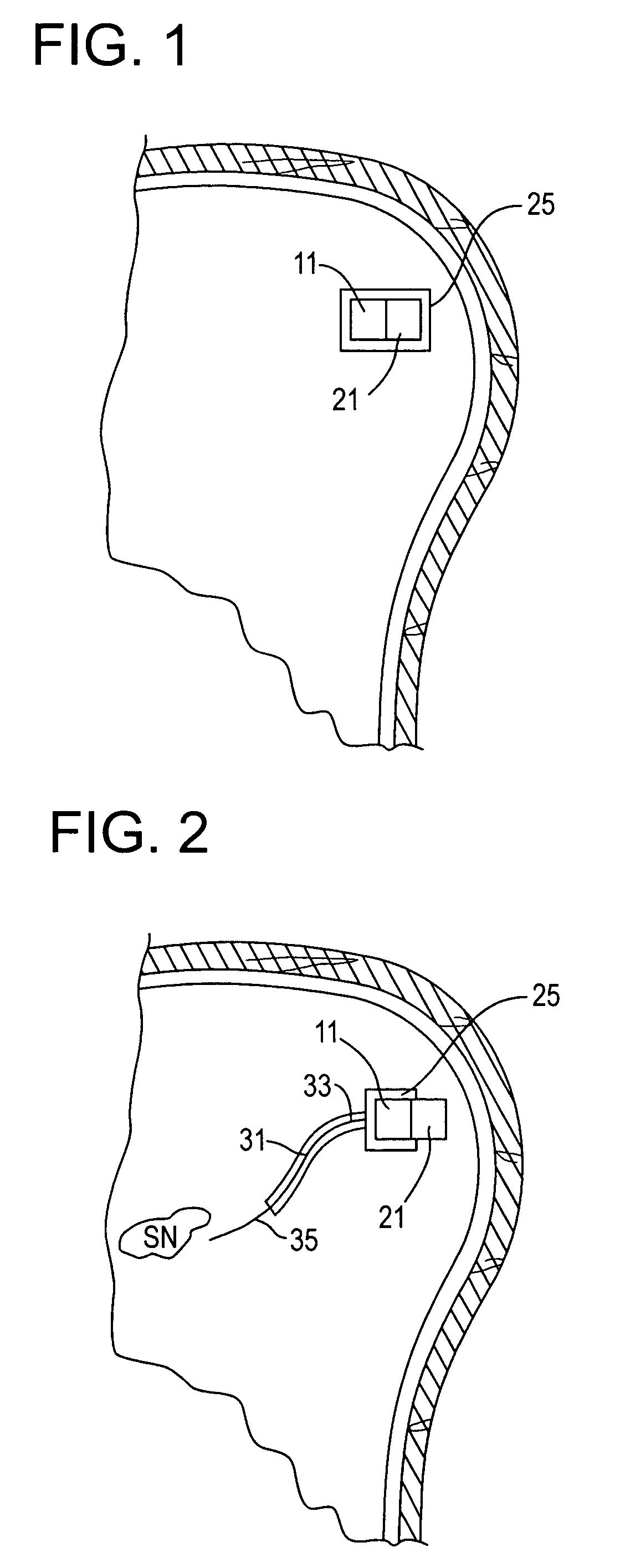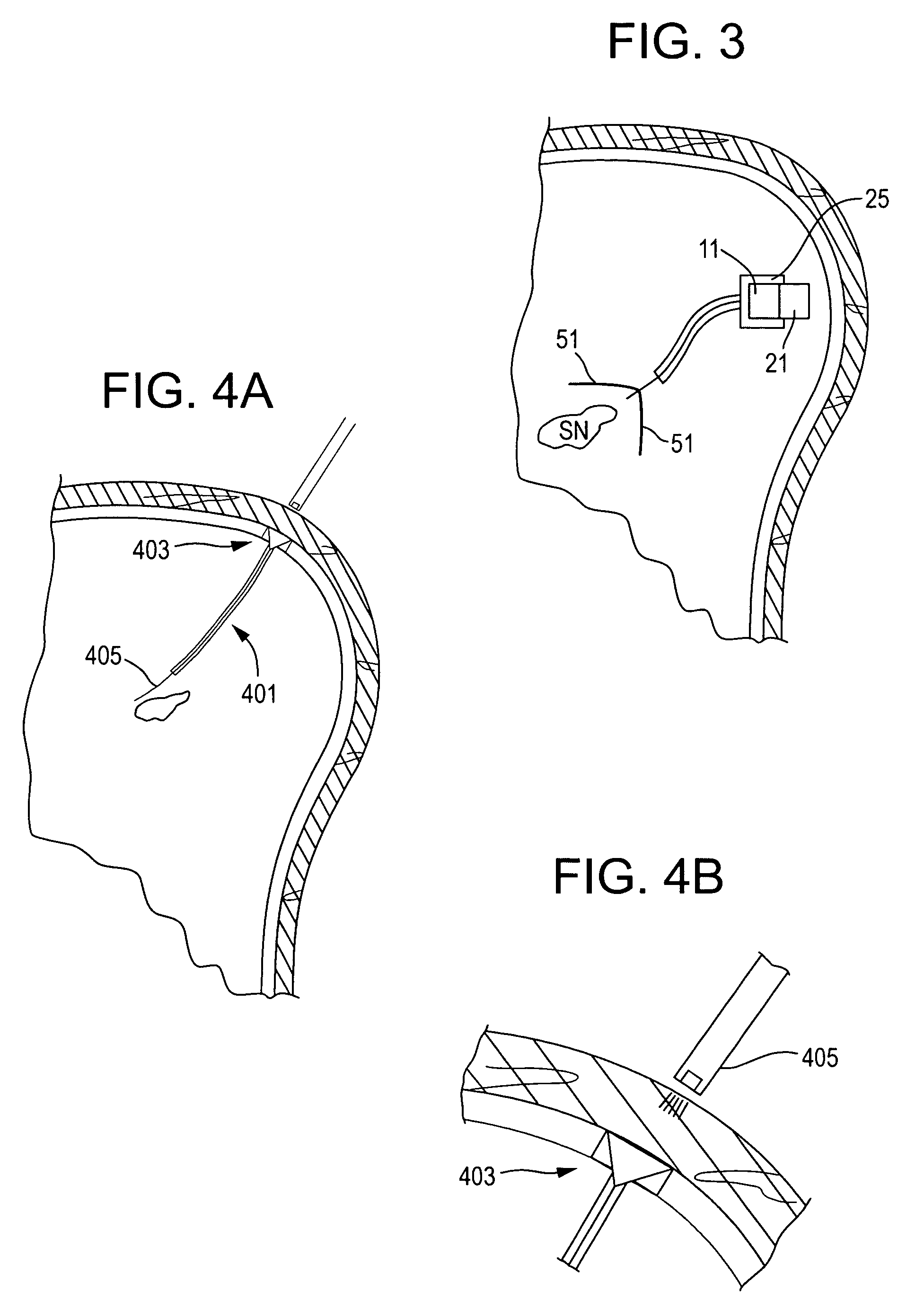Red light implant for treating Parkinson's disease
a technology of parkinson's disease and implanted ion, which is applied in the field of parkinson's disease treatment with ion-linked light implants, can solve the problems of decreased neuronal energy output, inability to cross the blood brain barrier, and no systemic administration of anti-oxidants has been shown to be successful, so as to and increase the activity of sod
- Summary
- Abstract
- Description
- Claims
- Application Information
AI Technical Summary
Benefits of technology
Problems solved by technology
Method used
Image
Examples
Embodiment Construction
[0042]Preferably, the red light of the present invention has a wavelength of between about 650 nm and about 1000 nm. In some embodiments, the wavelength of light is between 800 and 900 nm, more preferably between 825 nm and 835 nm. In this range, red light has not only a large penetration depth (thereby facilitating its transfer to the fiber optic and SN), but Wong-Riley reports that cytochrome oxidase activity is significantly increased at 830 nm, and Mochizuki-Oda reported increased ATP production via a 830 nm laser.
[0043]In some embodiments, the wavelength of light is between 600 and 700 nm. In this range, Wong-Riley reports that cytochrome oxidase activity was significantly increased at 670 nm. Wollman reports neuroregenerative effects with a 632 nm He—Ne laser.
[0044]In some embodiments, the light source is situated to irradiate adjacent tissue with between about 0.02 J / cm2 and 200 J / cm2 energy. Without wishing to be tied to a theory, it is believed that light transmission in th...
PUM
 Login to View More
Login to View More Abstract
Description
Claims
Application Information
 Login to View More
Login to View More - R&D
- Intellectual Property
- Life Sciences
- Materials
- Tech Scout
- Unparalleled Data Quality
- Higher Quality Content
- 60% Fewer Hallucinations
Browse by: Latest US Patents, China's latest patents, Technical Efficacy Thesaurus, Application Domain, Technology Topic, Popular Technical Reports.
© 2025 PatSnap. All rights reserved.Legal|Privacy policy|Modern Slavery Act Transparency Statement|Sitemap|About US| Contact US: help@patsnap.com



